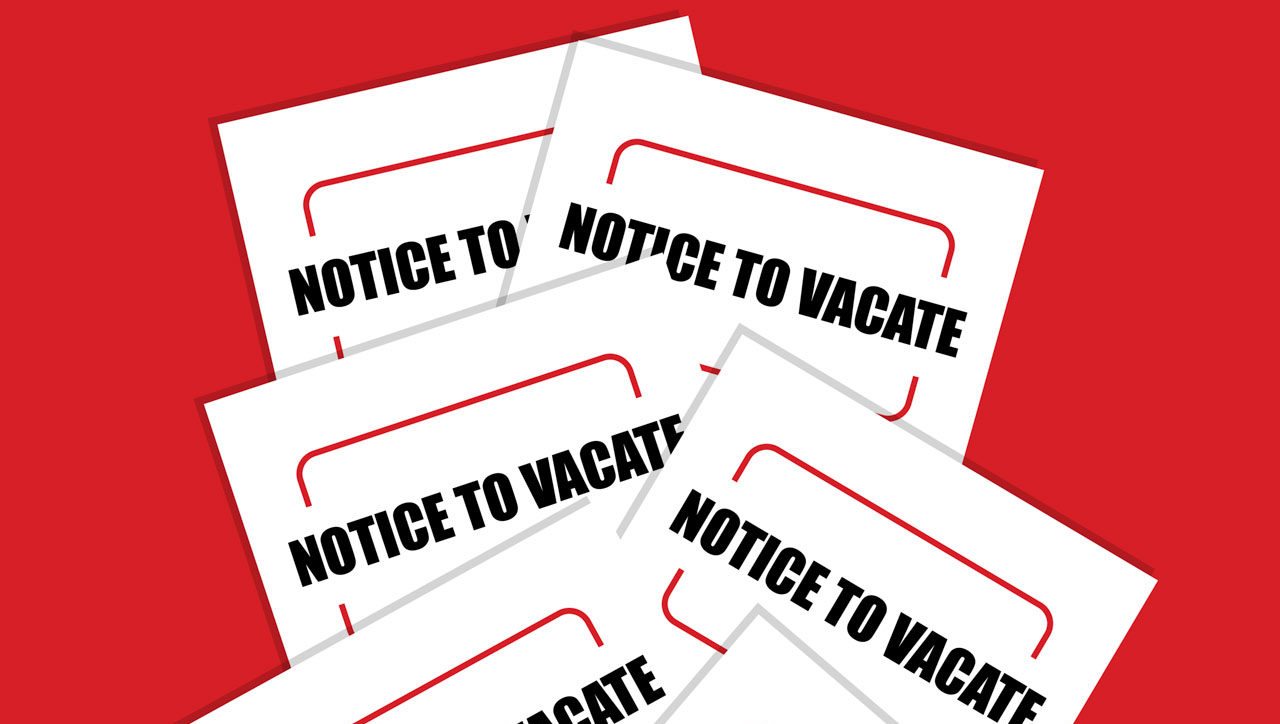
Illustration by Jessica Turner
Not long after a nationwide moratorium on evictions ended, representatives from the Oak Cliff-area nonprofit Under One Roof set up tables and computers in the lobby of a multifamily property where dozens of residents had just received eviction notices.
Volunteers and apartment managers were there to help tenants apply for rental assistance by translating documents and filling out paperwork. The property management company, City Gate, has buildings in Oak Cliff and throughout Dallas and wanted to ensure residents knew help was available, says Dawn Waye, City Gate’s founder and operator.
“We knocked on doors, called, printed fliers, and we made sure our staff was treating people compassionately, because we know fear can keep a person from coming in and asking for help,” she says.
“All they had to do was come down, acknowledge their rent would be paid and sign,” Waye says.
That first Under One Roof visit benefitted at least 25 households by helping them catch up on rent. Many hadn’t paid in over a year, which hurts landlords who use rent money to fund payroll, pay taxes, mortgages and maintain their properties, Waye says.
“The last thing we want to do is put anybody out of their home,” she says. “That is definitely not the heart of the people that I work with in the industry.”
In early 2020, Dallas eviction filings were 15-20% above historic averages, according to researchers at Princeton’s Eviction Lab. Recognizing the impending problem and fearing a wave of displaced tenants, in March 2020 the Centers for Disease Control and Prevention enacted a moratorium temporarily preventing nonpayment evictions.
Evictions came to a near standstill for nine months. Even when the moratorium ended, the eviction crisis many feared didn’t materialize, though cases slowly started to rise. But early in December, evictions began increasing quickly, putting the month on track to hit 85% more filings than average.
“All they had to do was come down, acknowledge their rent would be paid and sign.”
-Dawn Waye
“All they had to do was come down, acknowledge their rent would be paid and sign.”
-Dawn Waye
Property owners such as City Gate, housing advocates, pro bono attorneys and apartment associations are working to stem a wave of evictions, using data to pinpoint problematic areas of the city and resources to pay rents.
“It takes a lot less toll on the community than having to put them through the entire rehousing system that they would enter if they’re homeless,” says Ashley Brundage, executive director of housing stability and senior vice president of community impact at United Way.
But will it be enough?
In Dallas County, residents in 75237, 75232 and 75115 are dealing with some of the highest eviction filing rates as of early December. That includes some of Oak Cliff, the Red Bird area, Wolf Creek and DeSoto.
Attorney Mark Melton and his wife, Lauren, founded the Dallas Eviction Advocacy Center during the pandemic to help disenfranchised tenants battle lawyered-up landlords.
Melton, a tax lawyer who started taking eviction cases pro bono during the pandemic, says in all but nine cases of 2,000 in a six-month period, there has been something that could be done to keep the home, be it pointing out plaintiff illegalities or helping to procure rental assistance.
“While laws exist to protect people, evictions rarely happen in accordance with the law, because the tenants don’t know any better themselves,” Melton says.
“The populations in the apartments are vulnerable. You miss work because you’re sick, or your job is down, or whatever happens, you’re screwed,” Melton says. “It’s an issue we see across the country, and the disproportionality of evictions, based on race, are pretty stark.”
United Way is in the process of identifying partners in eviction hotspots to distribute rental assistance funds faster and will launch a new program in January, Brundage says.
“While laws exist to protect people, evictions rarely happen in accordance with the law, because the tenants don’t know any better themselves,”
– Mark Melton
“While laws exist to protect people, evictions rarely happen in accordance with the law, because the tenants don’t know any better themselves,”
– Mark Melton
The federal government allotted $50 billion in funds for housing relief through the federal Coronavirus Aid Relief and Economic Security Act. It’s been up to local governments to get those funds to organizations and to the people who need them.
Under One Roof had $750,000 in rental assistance funds to disburse, Waye says, and volunteers from the nonprofit returned to assist tenants at her properties until those funds were exhausted.
“We are seeing more people experiencing homelessness during this time, and part of that is because safety nets have been stressed and stretched to the max,” Brundage says. “There are not any funds or an extra room to lend somebody.”
While the data on evictions is interesting, it doesn’t tell the entire story, says Jason Simon, the director of government affairs at the Apartment Association of Greater Dallas.
“One thing is it does not parse out non-payment of rent evictions versus evictions for other reasons,” he says. “Some of our members have acquired (problematic) properties, but we can’t help clean them up without the tools to be allowed to remove tenants.
“Another concern with some of the data is that it looks at eviction filings, and there’s a big difference between filing an eviction and an actual physical removal.”
Sometimes landlords serve an eviction notice to get a non-paying tenant’s attention — “to get them to come talk to us,” Simon says.
“For members (of the apartment association), eviction is a last resort,” Simon says. “It doesn’t make sense financially to evict. It doesn’t make sense on a human level, really in a lot of ways, so it really is our last resort.”
Brundage says she hopes lessons learned during the pandemic can lead to sustainable solutions.
“If anything good has come out of this, it is how well our organizations across the community have coalesced and come together to serve clients,” Brundage says.
“We keep saying to each other, ‘We can’t let this go. We are creating so many good things. We’ve made such good headway that once COVID is gone, we can’t let that falter.’ “




